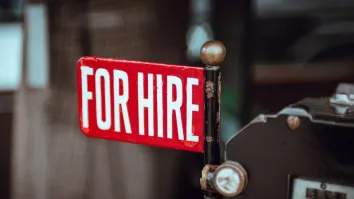The “Bailout” blame-game
By Allan Eu 余雅倫 The game begins when the Federal Reserve System allows commercial banks to create checkbook money out of nothing.
When such a loan is placed on the bank's books it is shown as an asset because it is earning interest and, presumably, someday will be paid back.
At the same time an equal entry is made on the liability side of the ledger. That is because the newly created checkbook money now is in circulation, and most of it will end up in other banks which will return the canceled checks to the issuing bank for payment.
Individuals may also bring some of this checkbook money back to the bank and request cash. The issuing bank, therefore, has a potential money pay-out liability equal to the amount of the loan asset. When a borrower cannot repay and there are no assets which can be taken to compensate, the bank must write off that loan as a loss.
However, since most of the money originally was created out of nothing and cost the bank nothing except bookkeeping overhead, there is little of tangible value that is actually lost. It is primarily a bookkeeping entry.
A bookkeeping loss can still be undesirable to a bank because it causes the loan to be removed from the ledger as an asset without a reduction in liabilities. The difference must come from the equity of those who own the bank. In other words, the loan asset is removed, but the money liability remains.
The original checkbook money is still circulating out there even though the borrower cannot repay, and the issuing bank still has the obligation to redeem those checks. The only way to do this and balance the books once again is to draw upon the capital which was invested by the bank's stockholders or to deduct the loss from the bank's current profits.
In either case, the owners of the bank lose an amount equal to the value of the defaulted loan. So, to them, the loss becomes very real. If the bank is forced to write off a large amount of bad loans, the amount could exceed the entire value of the owners' equity. When that happens, the game is over, and the bank is insolvent.
The Federal Reserve System, the Federal Deposit Insurance Corporation, and the Federal Deposit Loan Corporation guarantee that massive loans made to large corporations and to other governments will not be allowed to fall entirely upon the bank's owners should those loans go into default.
This is done under the argument that, if these corporations or banks are allowed to fail, the nation would suffer from vast unemployment and economic disruption. The end result of this policy is that the banks have little motive to be cautious and are protected against the effect of their own folly.
Because the banks can make more money on loans to the corporate giants and to foreign governments; also, the bigger loans are the safer for the banks, because the government will make them good even if they default. There are no such guarantees for the small loans.
The public will not swallow the line that bailing out the little guy is necessary to save the system. The dollar amounts are too small. Only when the figures become mind-boggling does the ploy become plausible.
It is important to remember that banks do not really want to have their loans repaid, except as evidence of the dependability of the borrower. They make a profit from interest on the loan, not repayment of the loan.
If a loan is paid off, the bank merely has to find another borrower, and that can be an expensive nuisance. It is much better to have the existing borrower pay only the interest and never make payments on the principle. That process is called rolling over the debt.
One of the reasons banks prefer to lend to governments is that they do not expect those loans ever to be repaid. Due to the objective of perpetual interest the bank offers to roll over the loan when the borrower finally declares that he cannot pay.
Eventually, the borrower comes to the point where he can no longer pay even the interest and the play becomes more complex. The bank does not want to lose the interest, because that is its stream of income.
But it cannot afford to allow the borrower to go into default either, because that would require a write-off which, in turn, could wipe out the owners' equity and put the bank out of business. So the bank's next move is to create additional “elastic” money and lend that to the borrower so he will have enough to continue paying the interest.
Used car managers call it “dig him up then burry him deeper!” and they would gladly do that a third time if necessary… “Up the-Ante-Play."
As mentioned before that the Federal Reserve System has loan fiat money to governments of small countries around the world whether it’s for economic needs or fighting a war. Yes even Asian countries and Hong Kong was their breeding ground for over a hundred years.
The day Hong Kong was returned to China the Fragrant Harbor has become "The Monaco of China" to many people. Thanks to this magnificent effect, people from mainland China are now buying about 30% of the properties in Hong Kong above US $1.5 million in price.
With the courtesy of Mr. Bernanke/Federal Reserve and Mr. Draghi in Europe Hong Kong asset prices are likely to continue to face upward pressure for years to come; hence, it is entirely possible that Hong Kong residential prices could rise 100% from here over the course of the next three years…Now is that a bubble?
A word about India in Vietnam:
Having an Indian bank in Vietnam would help support bilateral trade cooperation between India and Vietnam, especially after India signed a commercial cooperation agreement with ASEAN.
The bilateral trade between India and Vietnam in 2010 was US$2.75 billion, growing 34.3% year-on-year. The figure was US$1.55 billion in the first five months this year, a 30% year-on-year growth, and the target on bilateral trade this year is US$4 billion.
Future success depends on the “true-grid” intention; hence, if down the road the IOB is lending funds to the Vietnamese government… watch out, Rothschild is in the building!
Here’s a quick look at India’s banking system:
“Is India’s banking system in trouble?” someone asked. It looks likely that a big chunk of restructured loans will turn sour. The damage will be felt by state banks, particularly smaller ones. They will struggle to raise more capital because the government is cash-strapped and reluctant to pay for more equity, yet simultaneously unwilling to dilute its stakes in the banks.
India has superb private banks but state-controlled banks still account for three-quarters of all loans. Estimates by The Economist suggest that 93% of restructured loans sit with public lenders.
Among public-sector banks the burden is loaded on smaller lenders. State Bank of India, by far the largest state outfit, has a comparatively clean balance-sheet. A silver lining is that India’s well-run private banks should take more market share.
Still, the cost of public-sector banks’ troubles will be felt by responsible borrowers who may face scarcer and dearer credit. And that will slow the wider economy, which must try to accelerate with a flabby state-controlled banking system clinging to its ankles.
India has a bigger bad-debt problem than the rather stable level of banks’ official “non-performing” loans suggests. Just how big is unclear because many loans have been labeled as “restructured”. This means their terms have been softened but that they are not formally recognized as bad debts.




















 Advertise
Advertise






